
Leucopogon obovatus is a species of flowering plant in the heath family Ericaceae and is endemic to the southwest of Western Australia. It is an erect shrub with hairy young branchlets, variably-shaped, simple leaves, and erect clusters of 3 to 15 white, bell-shaped flowers on the ends of branches and in upper leaf axils.
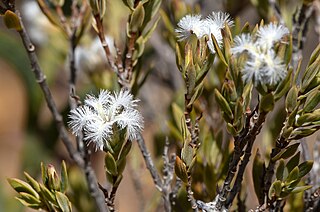
Leucopogon foliosus is a species of flowering plant in the heath family Ericaceae and is endemic to the south-west of Western Australia. It is a low, spreading shrub with hairy young branchlets, spirally arranged, erect, linear, narrowly egg-shaped to narrowly elliptic leaves, and white, narrowly bell-shaped flowers.

Leucopogon australis, commonly known as spiked beard-heath, is a species of flowering plant in the heath family Ericaceae and is endemic to southern Australia. It is an erect, aromatic shrub with narrowly egg-shaped to narrowly elliptic leaves, and white flowers arranged in spikes near the ends of branchlets.
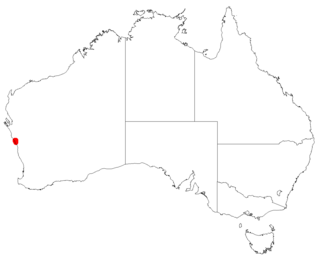
Leucopogon borealis is a species of flowering plant in the heath family Ericaceae and is endemic to a restricted area of the west of Western Australia. It is an erect shrub with hairy young branchlets, linear leaves and white flowers in nine to twenty upper leaf axils.
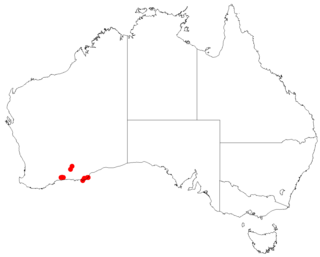
Leucopogon bossiaea is a species of flowering plant in the heath family Ericaceae and is endemic to a restricted area in the south-west of Western Australia. It is an erect shrub with elliptic to broadly egg-shaped leaves and white flowers in four to eleven upper leaf axils.
Leucopogon corymbiformis is a species of flowering plant in the heath family Ericaceae and is endemic to the south-west of Western Australia. It is an erect shrub with glabrous branchlets, narrowly elliptic to egg-shaped leaves with the narrower end towards the base, and white, bell-shaped flowers arranged in leaf axils and at the ends of branches.
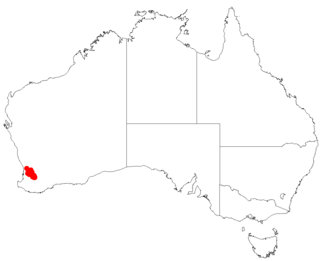
Leucopogon darlingensis is a species of flowering plant in the heath family Ericaceae and is endemic to the south-west of Western Australia. It is an erect shrub with hairy young branchlets, spirally arranged, linear, oblong, narrowly elliptic or narrowly egg-shaped leaves and white, bell-shaped flowers arranged in upper leaf axils and at the ends of branches.
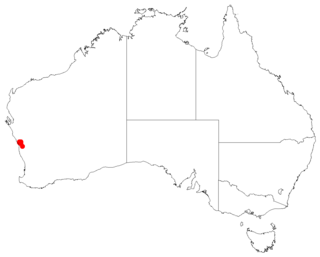
Leucopogon grammatus is a species of flowering plant in the heath family Ericaceae and is endemic to the south-west of Western Australia. It is an erect shrub with hairy young branchlets, spirally arranged, erect, egg-shaped leaves, and white, bell-shaped to broadly bell-shaped flowers.
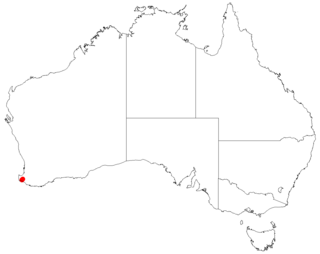
Leucopogon incisus is a species of flowering plant in the heath family Ericaceae and is endemic to a small area in the far south of the south-west of Western Australia. It is a delicate, erect or sprawling shrub with glabrous young branchlets, spirally arranged, erect, narrowly egg-shaped to narrowly elliptic leaves, and white or pale pink, narrowly bell-shaped to more or less cylindrical flowers.

Leucopogon inflexus is a species of flowering plant in the heath family Ericaceae and is endemic to the south-west of Western Australia. It is an erect, open shrub with more or less glabrous young branchlets, spirally arranged, erect, egg-shaped to more or less round leaves, and white, bell-shaped, densely bearded flowers.

Leucopogon maritimus is a species of flowering plant in the heath family Ericaceae and is endemic to the west coast of Western Australia. It is a low, spreading shrub with hairy young branchlets, erect, narrowly elliptic leaves and erect white, tube-shaped flowers in upper leaf axils or on the ends of branches.

Leucopogon microcarpus is a species of flowering plant in the heath family Ericaceae and is endemic to the southwest of Western Australia. It is a low, compact shrub with hairy young branchlets, narrowly elliptic, narrowly egg-shaped or linear leaves and erect, compact clusters of 3 to 9 white, tube-shaped flowers in upper leaf axils or on the ends of branches.
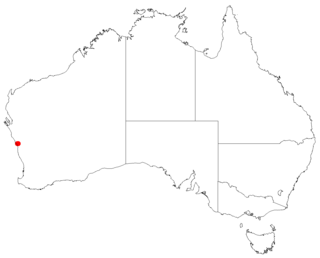
Leucopogon navicularis is a species of flowering plant in the heath family Ericaceae and is endemic to the southwest of Western Australia. It is an erect, compact shrub with hairy young branchlets, narrowly elliptic to narrowly egg-shaped leaves and erect, compact clusters of 4 to 12 white, bell-shaped flowers in upper leaf axils or on the ends of branches.
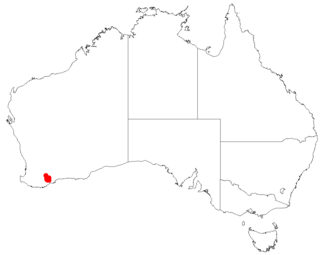
Leucopogon newbeyi is a species of flowering plant in the heath family Ericaceae and is endemic to a small area in the southwest of Western Australia. It is an erect shrub with densely hairy young branchlets, linear to narrowly elliptic or narrowly egg-shaped leaves and erect, compact clusters of 7 to 17 white, bell-shaped flowers mainly on the ends of branches.
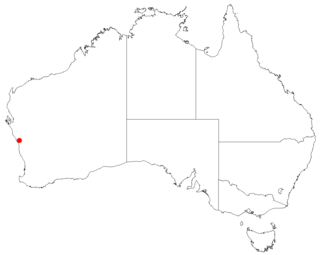
Leucopogon nitidus is a species of flowering plant in the heath family Ericaceae and is endemic to a small area in Western Australia. It is an erect, open shrub with hairy young branchlets, linear or very narrowly elliptic leaves and erect, compact clusters of 3 to 8 white flowers on the ends of branches and in upper leaf axils.

Leucopogon spectabilis is a species of flowering plant in the heath family Ericaceae and is endemic to inland Western Australia. It is a narrow, erect shrub with few glabrous branchlets, narrowly elliptic leaves and relatively large white flowers arranged in 14 to 32 upper leaf axils.

Leucopogon stokesii is a species of flowering plant in the heath family Ericaceae and is endemic to a small area in the south-west of Western Australia. It is an erect, open shrub with hairy young branchlets, narrowly elliptic leaves and erect, dense clusters of 5 to 10 bell-shaped white flowers on the ends of branches.

Leucopogon tenuicaulis is a species of flowering plant in the heath family Ericaceae and is endemic to the far southwest of Western Australia. It is an erect or sprawling shrub with thin stems, upright triangular to narrowly egg-shaped or narrowly elliptic leaves and erect, white or pale pink, tube-shaped flower arranged in large groups on the ends of branches and in upper leaf axils.
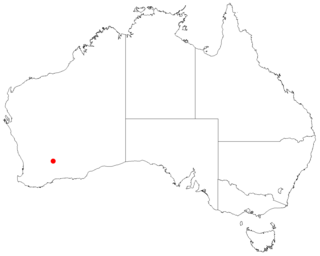
Leucopogon validus is a species of flowering plant in the heath family Ericaceae and is endemic to a restricted part of the south-west of Western Australia. It is a robust shrub with glabrous branchlets, narrowly elliptic leaves and white, bell-shaped flowers arranged in six to twelve upper leaf axils and on the ends of branches.
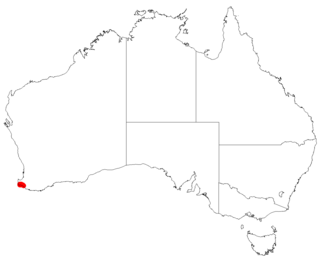
Leucopogon wheelerae is a species of flowering plant in the heath family Ericaceae and is endemic to the far south-west of Western Australia. It is a sprawling shrub with slender, glabrous young branchlets, more or less erect, egg-shaped or broadly egg-shaped leaves, and white, broadly bell-shaped flowers with white or pale pink lobes.





















